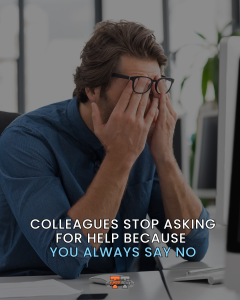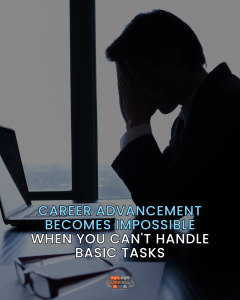Your Doctor’s “Rest” Advice is Accidentally Destroying Your Back (Here’s The Fix)
Your doctor meant well.
When she said “rest until it feels better,” she was trying to help. Using the same logic that works for sprained ankles and pulled muscles.
But after 8 years coaching working parents in Carlingford, I’ve seen this mistake hundreds of times. Chronic back pain isn’t a sprained ankle. And that well-meaning advice just made you weaker.
The €10,000 Rest Experiment Nobody Talks About
Here’s what happens when you follow rest advice for three weeks:
Week 1: You avoid activities. Feel slightly better. Think you’re healing.Week 2: Try normal activity. Immediate flare-up. Return to rest. Confidence drops.Week 3: Now afraid of most movements. Weaker than you started. More sensitive to pain than before.
Three weeks of your life. Hundreds on physio. Missed work. And you end up worse than when you started.
This isn’t your fault. It’s the system applying acute injury protocols to chronic pain conditions.
Why Rest Destroys Chronic Back Pain Recovery
Research from Professor Peter O’Sullivan shows what actually happens during prolonged rest:
Physical changes:
- Muscle strength drops 3-5% per week
- Joints stiffen from lack of movement
- Cardiovascular fitness declines
- Movement patterns become restricted
Neurological changes:
- Pain sensitivity INCREASES (opposite of what you’d expect)
- Brain files normal activities under “dangerous”
- Fear-avoidance patterns cement themselves
- Nervous system becomes hypervigilant
Psychological changes:
- Confidence in your body disappears
- Identity shifts to “person with a bad back”
- Social activities get avoided
- Career limitations become accepted as permanent
The longer you rest, the deeper you dig the hole.
The Fear-Avoidance Death Spiral
Here’s the trap that catches most people:
You hurt your back bending over once. Your brain learns: bending = danger.
Next time you need to bend, your nervous system prepares for threat:
- Muscles brace
- Breathing shallow
- Pain sensitivity spikes
- Flare-up happens
Not because bending damaged anything. Because your body created perfect conditions for pain.
This reinforces the belief that bending is dangerous. So you avoid it more. Get weaker. More sensitive. The cycle accelerates.Six months later, you’re watching from the sidelines at your daughter’s sports day because “your back can’t handle” standing for an hour.
What Actually Works: The Traffic Light System
After 8 years helping working parents around Carlingford and online, I’ve learned what separates people who recover from people who stay stuck.
The ones who recover don’t rest more.
They move smarter using a simple framework:
🔴 Red Light Activities
Cause significant pain increase that doesn’t settle within a few hours. You’re worse the next day.
Action: Temporarily modify. Don’t avoid forever – just park while you build capacity.
🟡 Amber Light Activities
Some discomfort during or after. Settles within a few hours. No worse next day.
Action: This is your growth zone. This is where adaptation happens. Stay here consistently.
🟢 Green Light Activities
No significant symptom increase during or after.
Action: Do these often. They maintain confidence and prove your body is capable.
The Goal: Systematically convert red lights to amber, and amber lights to green through progressive exposure over 4-8 weeks.
Graded Exposure: Your Roadmap Back
Let’s say you’re afraid to bend forward. Instead of avoiding it indefinitely or jumping straight back to full bending:
Weeks 1-2: Supported hip hinges to high box. Prove bending can be safe.Weeks 3-4: Gradually lower the box height. Build range.Weeks 5-6: Add light load. Challenge the movement pattern.Weeks 7-8: Progress load gradually. Rebuild full confidence.
Each successful repetition tells your nervous system: “This is safe.” Alarms quieten. Tolerance builds.
Same principle for lifting fears, walking distance, or any avoided activity.
The 24-Hour Rule That Changes Everything
Here’s how to know if an activity was within your capacity:
If you’re no worse 24 hours later, that activity was safe. You can repeat or slightly progress it.
Some discomfort during the activity doesn’t mean harm – especially in chronic conditions. What matters is your response over the next day.This simple rule removes the guesswork and rebuilds trust in your body’s resilience.
The Career Calculation Nobody Mentions
Let’s talk about what prolonged rest actually costs:
Direct costs:
-
- Sick days used (and dreaded)
- Reduced productivity from constant pain management
- Missed opportunities because you “can’t handle” certain tasks
- Physio appointments that maintain but don’t fix
Hidden costs:
-
- Colleagues stop asking for help (you always say no)
- Passed over for physical aspects of projects
- Reputation as “fragile” or “unreliable”
- Career advancement limited by perceived physical limitations
One client told me: “I stopped being considered for promotions the moment I started saying my back couldn’t handle things.“
The irony? His back could have handled it. With the right progressive approach.
What Your Kids Actually Learn
Your children are watching.
When you say “Dad’s back hurts” for the third time this month, they’re not just learning about your pain. They’re learning:
- Bodies are fragile
- Movement is risky
- Physical limitations are inevitable
- Pain means stopping, not adapting
You’re accidentally teaching fear when you could be teaching resilience. The parents I work with tell me their kids notice the change. Not just that mum or dad can play again – but that they approach challenges differently. With confidence instead of fear.
That’s a lesson worth more than pain-free days.
When Rest IS Right (And When It’s Not)
Let me be clear about boundaries:
Rest IS appropriate for:
- Fresh, acute injuries (first 48-72 hours)
- Post-surgical recovery (follow medical guidance)
- Inflammatory conditions (specific medical management)
- Pain with red flag symptoms (get assessed immediately)
Rest becomes harmful for:
- Mechanical back pain present for weeks/months
- Pain that’s been medically assessed as non-serious
- Chronic conditions where tissues aren’t actively damaged
- Situations where fear is the primary limiting factor
If you’ve been resting for more than a few weeks without improvement, the approach needs to change.
The Two Paths From Here
You’re standing at a fork in the road.
Path 1: Continue “Managing”
Keep resting when it hurts. Keep avoiding activities “just in case.” Keep calculating sick days and disappointing your family when they ask you to participate in life.
In 12 months, you’ll be weaker, more fearful, and further from the activities that matter. Your world will have shrunk a bit more. Your confidence will have eroded a bit further.
Path 2: Start Building
Work with someone who understands the difference between protection and overprotection. Build systematic progressions that respect your current capacity whilst expanding it. Over 8-12 weeks, reclaim the activities you’ve been avoiding.
In 12 months, you’ll be stronger, more confident and fully participating in work and family life. Not pain-free every day – but capable, resilient and unafraid.
What Happens Inside BackFix Coaching
I don’t tell clients to “push through pain” or “ignore their bodies.”I help them distinguish between pain that signals harm and pain that’s nervous system overprotection.We build personalised progressions based on:
- Your current capacity (what’s red, amber, green today)
- Your specific fears (what movements scare you most)
- Your life demands (what activities actually matter)
- Your timeline (realistic progression over weeks/months)
No generic plans. No one-size-fits-all progressions. Just systematic rebuilding tailored to your situation.
The Next 24 Hours
Here’s what I want you to do:
Pick ONE activity you’ve been avoiding. Something that matters to you. Playing with your kids. Helping a friend move. Participating in office setup days.
Do a significantly modified version of it today. Prove to yourself that movement can be safe when done intelligently.
One dad in Carlingford told me he was terrified of Christmas morning – until he used this system. Eight weeks later he was chasing his kids around the house.
Then ask yourself: “Do I want to keep figuring this out alone, or get systematic help?”
If the answer is help, email info@templetownsc.com.
No pressure. No hard sell. Just a conversation about whether BackFix Coaching makes sense for your situation.
Because life’s too short to spend it managing limitations you could be overcoming.
P.S. Want to dive deeper into this topic? Listen to the full podcast episode: Episode 14 – Sick of Being Told to Rest? Here’s What Actually Works
You’re not as fragile as you’ve been led to believe. Let’s prove it!💪🏻






